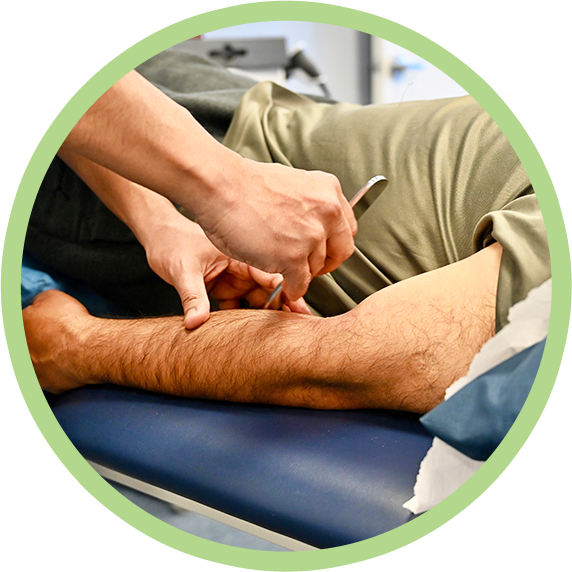The Graston Technique
What Is Graston Technique?
Graston Technique® (GT) is a unique, evidence-based form of instrument-assisted soft tissue mobilization that enables clinicians to effectively and efficiently address soft tissue lesions and fascial restrictions, resulting in improved patient outcomes. GT uses specially designed stainless steel instruments with unique treatment edges and angles to deliver an effective form of manual therapy.
This technique is particularly beneficial for conditions like muscle tear in neck, and many patients seek care at a specialized muscle tear in neck clinic NJ to relieve tension and restore mobility. Similarly, those dealing with lumbar discomfort often consult a lower back muscle strain doctor who may incorporate Graston Technique as part of a comprehensive treatment plan.
When combined with appropriate therapeutic exercise, GT helps restore pain-free movement and function. The instruments are also used diagnostically to assess the kinetic chain efficiently, following the principles of regional interdependence.

What are the Effects of Graston Technique?
Some of the physiological effects of GT:
Separates and breaks down collagen cross-links, and splays and stretches connective tissue and muscle fibers
Facilitates reflex changes in the chronic muscle holding pattern (inhibition of abnormal tone/guarding leading to pain reduction via improved sensory input)
Alters/inhibits spinal reflex activity (facilitated segment)
Increases the rate and amount of blood flow to and from the area (angiogenesis vs. immediate local increases in blood flow)
Increases cellular activity in the region, including fibroblasts and mast cells
Increases histamine response secondary to mast cell activity
Clinical Applications of Graston Technique
Here is a list of some of the most common conditions treated with Graston Technique® therapy.
- Ankle Pain (Achilles Tendinosis/itis)
- Wrist Pain (Carpal Tunnel Syndrome)
- Neck Pain (Cervical Sprain/Strain)
- Fibromyalgia
- Hamstring Injuries
- Hip Pain
- IT Band (Iliotibial Band)
- Tennis Elbow (Lateral Epicondylosis/itis)
- Back Pain (Lumbar Sprain/Strain)
- Golfer's Elbow (Medial Epicondylosis/itis)
- Knee Pain (Patellofemoral Disorders)
- Heel Pain (Plantar Fasciitis)
- Shoulder Pain (Rotator Cuff Tendinosis/itis)
- Scar Tissue
- Trigger Finger
- Women's Health (Post-Mastectomy and Caesarean Scarring)
How long does it take for Graston Technique to work?
Graston Technique treatments generally consist of 1-10 visits over the course of multiple weeks. You may feel benefits after just one session, but most patients feel major relief from their issues after 4-5 sessions. And yet others feel optimal results after getting the full series of treatments.
- Kendall Park
- Edison
- Princeton
- Old Bridge
- Monroe

